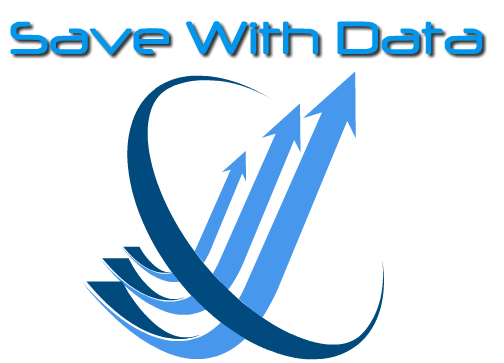
by Stephanie Rabinowotz | Dec 16, 2015 | Big Data, Business Optimization
Even the most successful CEO out there is still human. No one person is perfect, we all display human characteristics and flaws. It is because of this that science uses objective data in their tests, because subjective allows for personal opinions. Objective data is the only information that is 100% unbiased truth. So how do businesses get this type of objective data?
By Using Big Data.
Companies that use Big Data allow themselves to see the hard truths about their company that they themselves would overlook. When we put hard work into something, we don’t want to see anything wrong with it which makes it hard for us to see when there are issues. Big Data is the fresh set of eyes that can examine all of the nook and crannies of your business to inspect the problem areas we would not catch on our own.
The other great think about Big Data is that it is cross cultural. Instead of trying to convince a company in China that you are successful by talking with them, it is much more impressive to simply show them the data. Put your entire operation into data form and it can be read across any language. Measuring success with data is a great way to standardize the definition of what it means to be successful.
Big Data has proven time and time again to be a necessary tool in the business world. So what are you waiting for? Go out and get started with Big Data!

by Bill Decker | Jul 7, 2015 | Business Intelligence, Measuring Results
Since Robert Kaplan and David Norton popularized the “balanced scorecard” approach to managing business performance in 1996, senior executives have eagerly embraced its prescription for measurable objectives and key performance indicators as the answer to all business problems. At the top of the pyramid, enlightened corporate leaders understand the need for strategic direction and solid KPIs that demonstrate progress toward strategic goals,
facilitated by comprehensive business intelligence. But too often, the connection isn’t made between “big picture” strategy and the activities of front-line employees further down the pyramid.
Today, corporate leaders live by robust sets of metrics that track their contributions to profitability, customer satisfaction, and employee retention. Their employees likewise focus on their individual numbers for sales, customer response time, and professional development. Unfortunately, because they may not really understand the relationship between their daily performance and their company’s strategic direction, much can get lost in translation. Widely disseminated business intelligence can be the missing link.
Strategy vs. Metrics
In a cable company call center, for example, customer care agents pay close attention to statistics like time spent with each customer and the abandon rate for incoming calls. These metrics are factors in a company-wide strategic pursuit of happier, more loyal customers. But without business intelligence that illustrates the relationship between customer loyalty strategy and call center metrics, progress can stall. Even the most conscientious employee may rush a customer call to meet a time target, ultimately damaging the relationship that is the core of business success. Business intelligence helps all employees see both the forest and the trees.
Your Business Intelligence Advisor/Knowledge Broker
For many companies, the most effective way to bridge the divide between the top and bottom of the organization chart is with assistance from an independent business intelligence advisor skilled in communicating with people at all professional levels. An objective consultant can bring a fresh set of eyes to longstanding issues, acting as a knowledge broker between the executive suite and employees in the field. The resulting business intelligence tools will give everybody the information they need to improve. Look for an advisor who understands business performance and the technical tools available to resolve issues, and who is experienced in breaking down organizational barriers of culture, resources and education.
Share the Wealth: Business Intelligence for All
Limiting your view of business intelligence to performance measurement will limit its impact. Executives are often nervous about distributing corporate-level data such as risk management and financial reports too broadly. While there may be legitimate reasons for such concerns, they should be weighed against the value of building the most well-informed workforce possible. An organization’s leaders know what happened and when, but the people with first-hand knowledge of why it happened are usually in field offices. Making your organization’s business intelligence widely available at all levels lets the C-suite learn from the field and vice versa. Isolating information limits your company’s ability to get smarter.
To learn more about business intelligence software, please visit www.cliintel.com or e-mail askcliintel@cliintel.com.

by Bill Decker | Jun 5, 2015 | Business Intelligence, Measuring Results
How dirty is your data? As business intelligence experts know, the answer to that question can have a tremendous impact on your organization’s efficiency. And although it may sound unsavory, the truth is that unreliable information, aka dirty data, is a common business intelligence problem for large companies.
Dirty data becomes a problem as businesses grow over time. As stores, offices, warehouses, and plants are established and enhanced, data systems multiply. Lack of standardization among these systems may allow users to produce inconsistent, invalid, or duplicated information, or simply fail to enter critical information.
While it may not have been a practical or intentional choice, lack of standardization allows for the adoption of different business rules and data systems across the company. Sites may use different sets of codes to represent similar products, services, or entities such as vendors, customers or lines of business. Data systems in use at some locations may collect information from users into free-form entry fields instead of using a “pick list” of options, increasing the likelihood of incorrect entries or multiple versions of a single value resulting from misspelling and typos. Furthermore, these systems may allow certain values such as names, addresses, or dates to be unexpectedly overwritten, limiting the ability to track historical events or create accurate business intelligence trend reporting.
When dirty data finds its way into reports, the results can be inaccurate and unusable, with important information distorted, excluded, or even multiplied many times over. When this happens, the hunt for meaningful, actionable business intelligence can become a laborious, never-ending quest.
Companies may not be aware of the full extent of their business intelligence problems, or may accept them as an unfortunate fact of life. Even if you know where the problems lie, you may have to follow elaborate and repetitive procedures to gather the business intelligence you need to succeed. Dirty data makes it difficult to consolidate and measure business results. Inaccurate and missing information prevents decision-makers from getting answers to their important questions about your business.
To evaluate the health of your data, consider the following business intelligence questions:
- Do you find yourself doing the same repetitive tasks each month to compile clean data?
- Is it difficult to answer questions about your business using your data?
- Do you regularly follow extensive procedures to retrieve and consolidate companywide data?
- Do you spend too much time analyzing your business and not enough on decisions that will move the company forward?
If your best analysts are spending the majority of their time compiling the data required to create reports, and the results always arrive at the last minute or past deadlines, it’s time to look into the role of business intelligence in your organization. Tackle the problem head-on with an experienced business intelligence expert who can identify and address dirty data issues, homogenize data across different systems and standards, and consolidate company-wide data so it is accessible and reportable whenever you need it. You’ll be on your way to creating a more strategic and action-oriented environment where those over-worked analysts can focus their efforts on analyzing results instead of preparing them.
To begin the process of addressing data quality, your business intelligence partner will need to understand your organization’s goals. Where do you want to be in five years? What has been keeping you awake at night? Identifying strategic priorities will help you outline a plan which focuses on the most relevant and critical information.
To establish high-quality, reliable data, the business intelligence team will filter, merge, standardize, and validate records, all with the end goal of simplifying life for the end user. But creating a great business intelligence solution involves much more than database management and coding. The process will likely involve identifying areas where company standards and business rules can be added or improved, and getting consensus from stakeholders to define the rules that will prevent future problems.
Working with the right business intelligence partner, you’ll ultimately find the treasure that every large business dreams of: a centralized, authoritative source of data, married to a business intelligence system that analyzes your business to pinpoint critical problems and highlight favorable opportunities, and then reports the results you need to measure progress and plan for the future.
Business Intelligence, Operational Efficiency and Dirty Data
by Paul Ousterhout, Business Support Expert
To learn more about business intelligence, visit www.cliintel.com or e-mail askcliintel@cliintel.com

by Richard Batenburg | Feb 4, 2015 | Business Intelligence, Measuring Results
If you want your business intelligence system to power your company over the rough terrain ahead, make it accessible to every level of your organization. The most successful solutions continuously deliver vital, current information to the front lines to help them drive the organization forward. This “four-wheel drive” approach of distributing data beyond the executive suite to all corners of the organization is the next step in the evolution of business intelligence.
First, use your data to develop key performance indicators for every department. These KPIs support the business imperatives that drive organizational decisions. Broad-based familiarity with key performance indicators and the data behind them will ensure that goals are aligned throughout the organization. Actionable messages from the executive suite will be consistently transmitted, inspiring divisional and regional leaders, supervisors, and ultimately, customer-facing agents. This is the real power of business intelligence in action.
Next, go viral with your business intelligence. Internet users know that the most popular websites are those that are updated regularly. Similarly, if you want business intelligence to spread quickly, give everyone in the organization continuous access to fresh data via a simple user interface that responds to queries posed in common, “lay person” language.
Online Analytical Processing (OLAP) techniques allow your IT staff to update data affordably, multi-dimensionally and in real time, facilitating convenient correlation of data points and tracking of key performance indicators from all corners of the organization. With access to this business intelligence, users across the company can query based on their own specific interests – no more waiting for an overloaded IT department to produce canned reports that are out of date when they arrive. IT staff become agents of empowerment instead of producers of reports.
The final step in developing four-wheel drive business intelligence is making access painless and rewarding for users. A skilled business support system provider can develop customized tools that are not only easy to use, but also reduce users’ workload. The provider should work closely with a cross-section of employees, ensuring a business intelligence solution that is essentially created by users for their peers. The result will be intuitive and eagerly adopted, minimizing training costs and user resistance. An agile development approach can give users access to some elements of the system early in the process, delivering an early return on investment and creating enthusiasm that will spread across the company.
We have seen this approach to business intelligence revolutionize several large organizations with a reputation for very difficult reporting and metrics practices. One system currently in production pulls data from more than 20 source systems to manage more than two million new records per day and deliver information to 3,000 front-line users serving 25 million customers.
To learn more about business intelligence solutions, please visit www.cliintel.com or e-mail askcliintel@cliintel.com.










Recent Comments